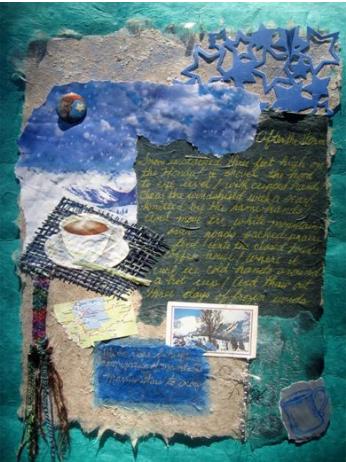EL. I was a papermaker long before I was a poet, and I have a book on the subject published in several languages. Its title in the U. S. is THE GOURMET PAPER MAKER and in England THE PAPERMAKER. The book specializes in paper made from inedible parts of fruits and vegetables. I've been a poet for fifteen years, and much of that time have also dabbled in collage for the recycled leather covers of folk art books that I bind. But I didn't think of combining these three passions until a couple of years ago when I made an oversized sheet of paper and embedded one of my poems in the wet pulp and then illustrated the poem with various items I've collected for much of my life. These items include: handmade papers, postage stamps, photos, confetti, charms, milagros, buttons, shells, rocks, bark, natural fiber yarns, feathers, wheat, pressed leaves and flowers, rubber stamped images, travel memorabilia and book/magazine clippings. I dubbed this new (to me) art form pollage. I've now produced 70-plus pollages.
